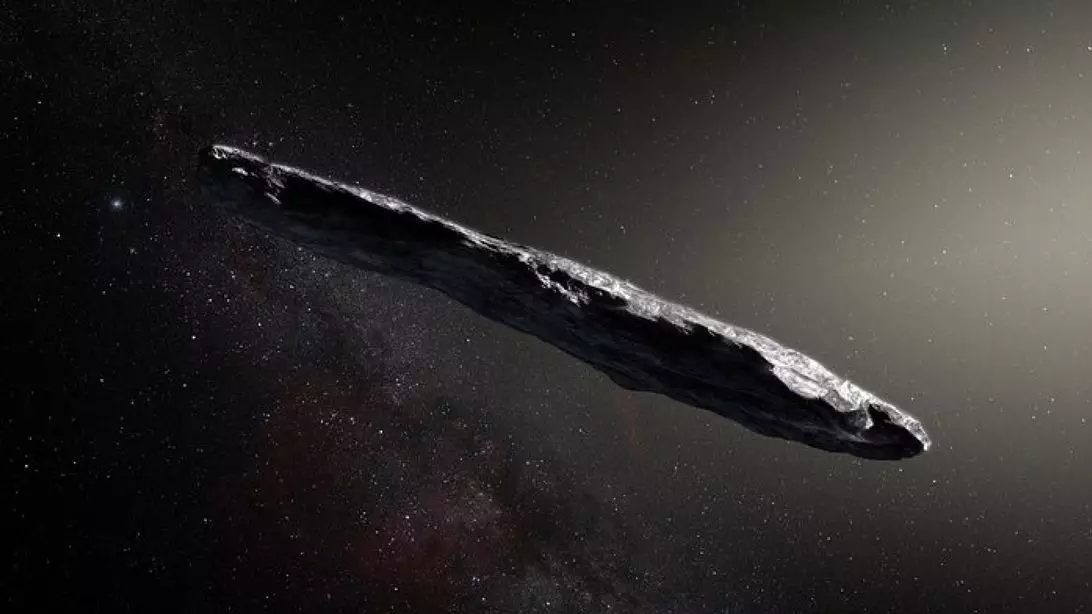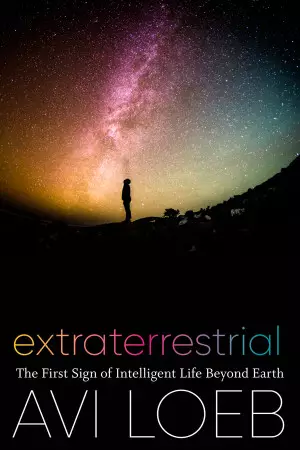
A Harvard professor believes alien garbage visited our solar system back in 2017, and that more is on its way - saying it may have been some sort of 'message in a bottle'.
Abraham 'Avi' Loeb, who is the chair of Harvard's Department of Astronomy, claims an object that recently wandered into our solar system wasn't just another space rock, but in fact a form of alien technology.
The space object was dubbed Oumuamua, which translates roughly from Hawaiian as 'scout', having been spotted by Haleakalā Observatory in Hawaii.
Advert
It travelled towards our solar system in September 2017 from the direction of Vega, a nearby star 25 light years away.

In his forthcoming new book, Extraterrestrial: The First Sign of Intelligent Life Beyond Earth, Loeb explains how, on 9 September, its trajectory brought it closest to the sun, before blasting at about 58,900mph past Venus' orbital distance at the end of the month, shooting past Earth's on 7 October before 'moving swiftly toward the constellation Pegasus and the blackness beyond'.
At first, scientists believed it was simply an ordinary comet, but Loeb soon considered whether or not it may have been discarded technology from an alien civilisation - looking at a number of unusual properties to come to the conclusion, including Oumuamua's dimensions and the way it reflected sunlight.
Advert
The cigar-shaped object was at least five to 10 times longer than it was wide, something not seen with any naturally occurring space body experts have ever seen.
Loeb explains in his book: "This would make Oumuamua's geometry more extreme by at least a few times in aspect ratio - or its width to its height - than the most extreme asteroids or comets that we have ever seen."
It was also unusually bright, and was at least 'ten times more reflective than typical solar system [stony] asteroids or comets', with Loeb likening its surface to shiny metal.
Then there was also the way Oumuamua moved, Loeb explains.
Advert
"The excess push away from the sun - that was the thing that broke the camel's back," he says, adding that Oumuamua didn't follow its calculated trajectory but actually accelerated 'slightly, but to a highly statistically significant extent' as it moved away from the sun.
Due to the anomalies, Loeb concluded that the chances of it being a random comet was around on in quadrillion, speculating that it could be 'space junk' that had once served as a space navigation buoy used by a civilisation long ago.
"The only way to look for [alien civilizations] is to look for their trash, like investigative journalists who look through celebrities' trash," Loeb says.

In an article for Scientific American, Loeb explains how his book details the 'unusual properties' of Oumuamua.
Advert
"It had a flattened shape with extreme proportions - never seen before among comets or asteroids, as well as an unusual initial velocity and a shiny appearance," Loeb said.
"It also lacked a cometary tail, but nevertheless exhibited a push away from the sun in excess of the solar gravitational force.
"As a regular comet, Oumuamua would have had to lose about a tenth of its mass in order to experience the excess push by the rocket effect. Instead, Oumuamua showed no carbon-based molecules along its trail, nor jitter or change in its spin period - as expected from cometary jets.
"The excess force could be explained if Oumuamua was pushed by the pressure of sunlight; that is, if it is an artificially-made lightsail - a thin relic of the promising technology for space exploration that was proposed as early as 1924 by Friedrich Zander and is currently being developed by our civilisation.
Advert
"This possibility would imply that Oumuamua could be a message in a bottle."
Featured Image Credit: ESO/M. KornmesserTopics: World News, News, space